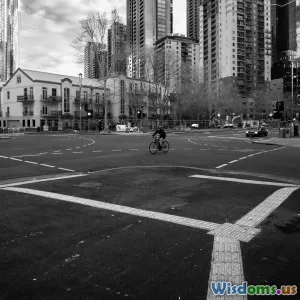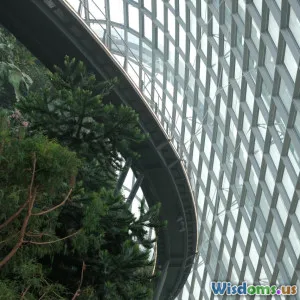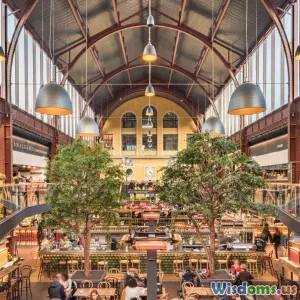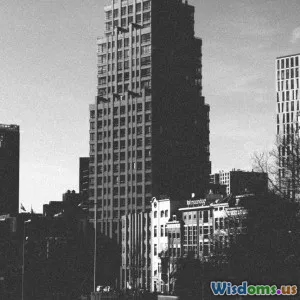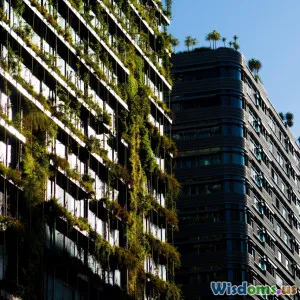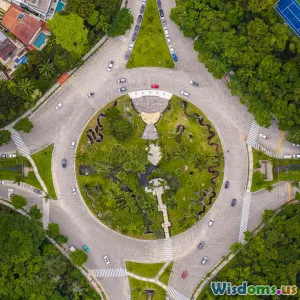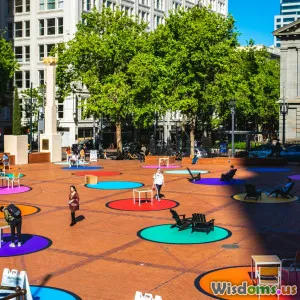
Why Thoughtfully Designed Seating Is Key To Vibrant Public Spaces
8 min read Discover how thoughtfully designed seating transforms public spaces into vibrant community hubs, enhancing social interaction and urban life. (0 Reviews)
Why Thoughtfully Designed Seating Is Key To Vibrant Public Spaces
In cities bustling with activity, the character and vitality of public spaces often hinge on one surprisingly simple element: seating. Though it might seem mundane at first glance, thoughtfully designed seating is a cornerstone of vibrant urban life, fostering social bonds, promoting inclusivity, and encouraging people to linger, relax, and connect.
Introduction: More Than Just a Place to Sit
Think about the last public park, plaza, or street corner you enjoyed. Did you sit down or were you left standing? Seating options, their arrangement, comfort, and aesthetic appeal, silently communicate an invitation—or a deterrent—to stop and engage. Far beyond just a resting spot, thoughtfully designed seating shapes how a space is used, who feels welcome, and whether that space hums with life.
Urban planner Jane Jacobs famously championed the concept of "eyes on the street," highlighting how active public spaces contribute to safer, healthier communities. Seating is a practical implementation of this idea; where seats exist, people gather, increasing the informal surveillance that deters crime and increases perceived safety.
The Role of Seating in Social Interaction
Designing for Engagement and Connection
Seating arrangements dictate social dynamics. Circular or semi-circular benches promote eye contact and conversation, unlike benches placed in a linear formation that encourage passive resting rather than interaction.
Take the example of the Superkilen Park in Copenhagen, celebrated for its multicultural design and dynamic seating. The benches and chairs there vary dramatically in height, style, and orientation, inviting users to choose their own level of privacy or sociability. This flexibility catalyzes spontaneous social connections among diverse groups, turning the park into a lively meeting point.
Seat Placement: Urban Psychology in Action
Research in environmental psychology suggests seating positioned near amenities like fountains, marketplaces, or greenery increases dwell time and fosters community. In New York City’s Bryant Park, removed benches facing inward towards social hubs were deliberately added to encourage people to stop, chat, and linger rather than simply pass through.
Such designs don’t happen by chance; planners use data on foot traffic, sun patterns, and views to optimize seat placement, demonstrating that thoughtful design is deeply informed by science and user experience.
Enhancing Inclusivity Through Seat Design
Accessibility and Comfort for All
A vibrant public space welcomes everyone—children, elderly, differently-abled, commuters, and tourists. Thoughtfully designed seating addresses these needs through features like armrests to aid standing up, variations in seat height, and options for different physical abilities.
Consider Barcelona’s implementation of "hygienic and accessible" seating across its plazas, where materials are weather-resistant and seats incorporate gaps to avoid misuse and maximize comfort while maintaining cleanliness.
Diversity in Seating Types
Beyond benches, public spaces benefit from a mixture of seating styles: individual seats, lounges, picnic tables, and movable chairs. Each caters to different activities: contemplation, socializing, eating, or even impromptu working. Such diversity respects varied cultures and lifestyles, enhancing inclusivity and making spaces usable throughout the day and across seasons.
Seating as a Catalyst for Economic and Cultural Vibrancy
Boosting Local Economy and Events
Well-designed seating can increase foot traffic, benefiting nearby businesses and enabling spontaneous markets or cultural performances. An illustrative case is the Piazza del Campo in Siena, Italy, where tiered seating and open spaces host festivals drawing thousands yearly, supporting local commerce.
Encouraging Public Art and Identity
Seating can also be a canvas for artistic expression that anchors a community’s identity. The “Bloomberg Angel's Court Seating” in London integrates creative designs that celebrate local heritage, turning functional furniture into memorable landmarks that attract visitors and delight residents.
Practical Tips for Urban Designers and Planners
- Understand the Community: Conduct surveys and workshops to learn what locals want and need from seating.
- Prioritize Flexibility: Use modular or movable pieces that allow users to customize their seating experience.
- Harness Natural Elements: Position seats to enjoy shade, sunlight, water features, or views based on climate and locale.
- Integrate Technology: Some cities incorporate solar-powered seats with device charging or Wi-Fi, blending modernity and comfort.
- Material Matters: Choose durable, low-maintenance, and eco-friendly materials that withstand heavy public use.
Conclusion: Seating Shapes Urban Life
Thoughtfully designed seating is far more than a convenience; it is an essential ingredient that molds the social fabric of public spaces. By encouraging human connection, welcoming diverse users, and enriching economic and cultural dynamism, seating transforms public areas into lively, inclusive hubs. Cities investing in purposeful seating design reap the rewards of safer, more engaging, and ultimately more vibrant urban communities.
Next time you sit in a park or plaza, take a moment to appreciate the design choices that invite you there—these are the subtle foundations upon which strong communities are built.
References:
- Gehl, Jan. Life Between Buildings: Using Public Space. Island Press, 2011.
- Jacobs, Jane. The Death and Life of Great American Cities. Random House, 1961.
- Copenhagen’s Superkilen Park design info: BIG Architects, Project Overview.
- Bryant Park Restoration Project Study, NYC Department of Parks & Recreation.
- Barcelona Public Seating Accessibility Guidelines, 2022.
- Bloomberg Angel’s Court Seating, London, Public Art Review, 2019.
- Environmental Psychology and Urban Planning research, Journal of Urban Design, 2020.
By weaving data, expert views, and real-world examples, this article hopes to inspire urban designers, city planners, and community leaders to rethink the humble seat’s crucial role in shaping the next generation of urban spaces.
Rate the Post
User Reviews
Other posts in Urban Planning
Popular Posts











